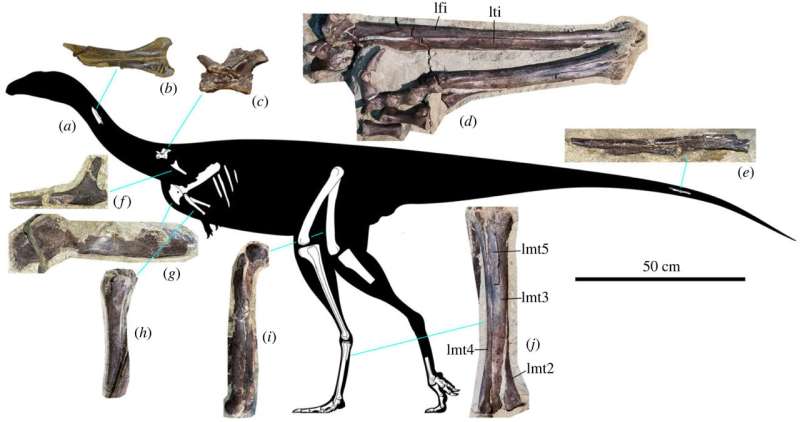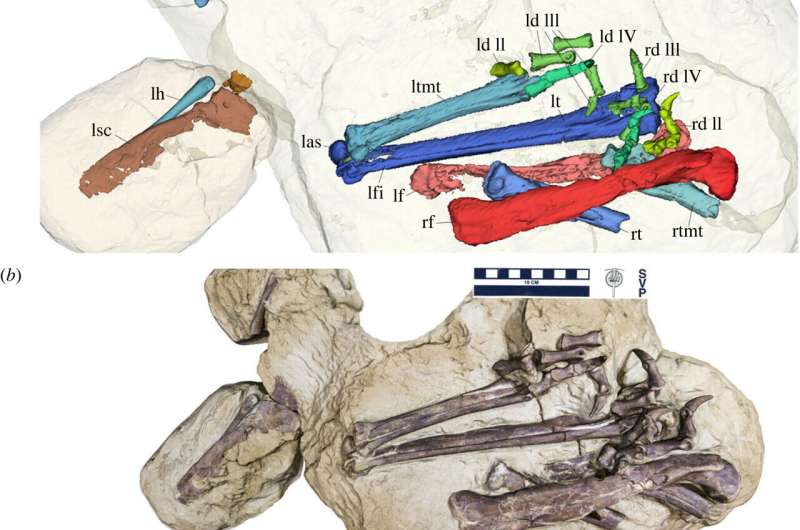May 28, 2024 report
Partial skeleton of a previously unknown medium-sized theropod dinosaur found in Siberia

Bob Yirka
news contributor

Study of a partial skeleton found embedded in a rock has resulted in the discovery of a new species of dinosaur. Using a variety of technology and techniques, researchers affiliated with several institutions in the Russian Federation found that the fossil once belonged to a previously unknown dinosaur they have named Kiyacursor longipes.
The team has published the in the journal Proceedings of the Royal Society B: Biological Sciences.
The rock was found to have recently fallen down a rocky cliffside in a part of western Siberia along the Kiya River due to natural erosion. The fossilized bones were sticking out of it, revealing its ancient history.
The researchers studied the fossils visually and through use of X-ray and computed tomography. The research team also collected samples from some of the fossils and studied them using a microscope. As part of their analysis, they found that the fossilized skeleton was approximately 113 to 121 million years old. They identified ribs, vertebrae, part of a shoulder, both feet and both legs.
The dinosaur was a noasaurid ceratosaur, a group of bipedal, non-avian swift runners with two small legs that would have been tucked up at the top. The finding, they note, extends the range of Ceratosauria in Asia by approximately 40 million years.

In measuring the length of the bones, the researchers found the dinosaur had what they describe as "unique hind-limb proportions" as compared to its known relatives, a feature that would have given the dinosaur better cursorial ability. It also had what they describe as "ostrich-like" feet, with its third toe extended—a feature not seen in any of its relatives.
They estimate that their K. longipes specimen was approximately 2.5 meters long (from nose to tail) when alive. They also found evidence that the medullary cavity inside the fossils that had once held bone marrow had ceased expanding, suggesting it was a mature adult, though not likely more than 3 years old at the time of its death.
Written for you by our author —this article is the result of careful human work. We rely on readers like you to keep independent science journalism alive. If this reporting matters to you, please consider a (especially monthly). You'll get an ad-free account as a thank-you.
More information: Alexander O. Averianov et al, The last ceratosaur of Asia: a new noasaurid from the Early Cretaceous Great Siberian Refugium, Proceedings of the Royal Society B: Biological Sciences (2024).
Journal information: Proceedings of the Royal Society B
© 2024 Science X Network



















